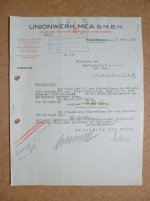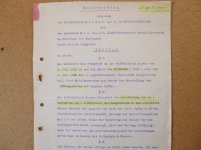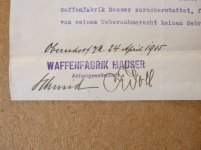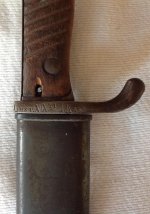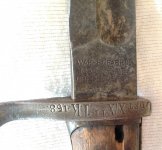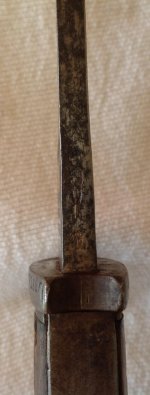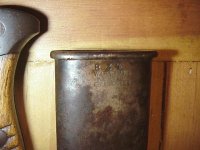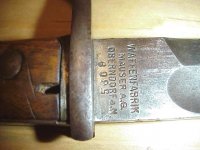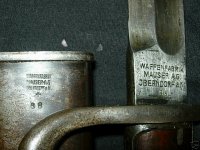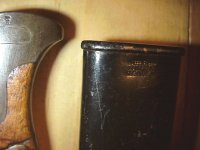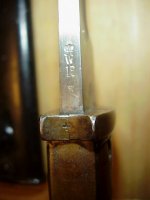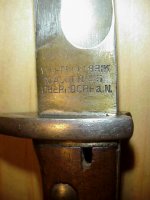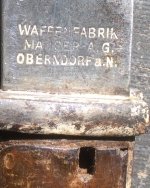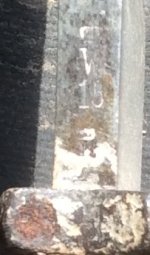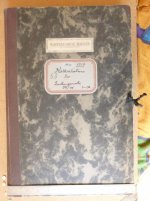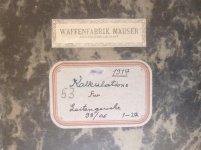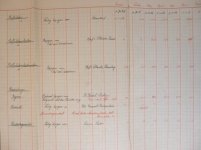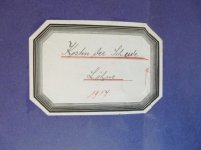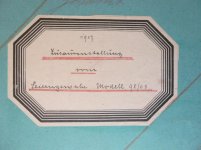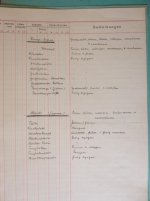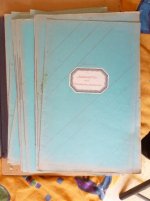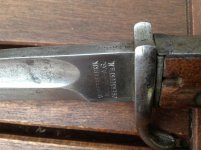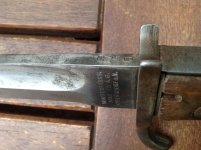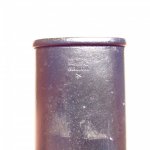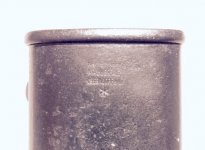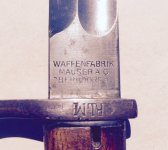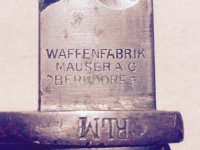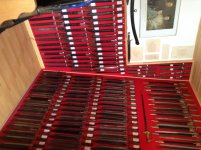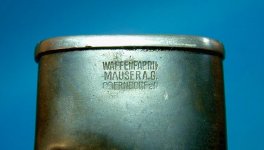Mauser Oberndorf is a well-known manufacturer of the German “butcher” bayonet, which resembles a butchers knife, but few realize that Mauser Oberndorf was not the actual manufacturer of the bayonets. Some years ago Jon Speed revealed the facts behind the production of the bayonets, in his Collector Grade book titled “Mauser: Original Oberndorf Sporting Rifles” page 50; however he left out much of the details of the relationship.
Today, Jon Speed tells us the rest of the story!
Jon Speed recently provided the documents from his archives that show the relationship in detail. During April 1915 Mauser Oberndorf contracted with “Unionwerk Mea G.m.b.H. Elektrotechnishe Fabrik Eisenwerk” at Feuerbach (northwestern suburb of Stuttgart) for the manufacture of 1,500,000 to 2,000,000 bayonets between July 1915 and July 1920, these bayonets were to be made at Mauser’s expense, who would cover operating costs and 1 Mark per bayonet. The contract also allows for a cancellation if the government doesn’t authorize the expenditure.
Although Mauser contracted for such a large number of bayonets, a million and half or more, the bayonets are not especially common, - though not scarce either. Many have been recorded and several studies list it in the “common” category of the manufacturers, however my own research suggests they are one of the “less common” amongst the commonly encountered makers. Known bayonets cover the range 1915-1918, the 1915 dated probably the most difficult to find, probably because production did not begin before July 1915, and 1917-1918 dated the most common date encountered.. Sawback blades are only known dated 1916 and 1917, my research shows 1917 sawbacks more common than 1916 dated.
The bayonets can also be found with Mauser Oberndorf made scabbards, which are a little less common and in my experience command a small premium over unmarked scabbards. How many bayonets were actually delivered is unknown, or Jon Speed did not say(**), but I suspect many were sent to Turkey, and that probably explains why the Mauser made bayonets are less common than you would expect. I have seen many cut down bayonets that have signs of Turkish service, and it is likely many ended up there.
Here are some pictures of the actual contract between the two firms, with the signatures of Mauser directors Schmid and Doll.
** Update, Jon Speed was able to determine approximately how many bayonets were made:
Paul , checked in my Mauser records and can say that app. 1,105,900 Bayonets were made by /for Mauser during WWI. I am sure the figure could be a bit higher as the Bayonet data for 1914-15 is not clear. I have a 1916 Bayonet with metal sheath with WFM name on it in small letters. Regards, Jon
https://gewehr98.wordpress.com/2015...sg9805-bayonet-production-during-world-war-i/
Today, Jon Speed tells us the rest of the story!
Jon Speed recently provided the documents from his archives that show the relationship in detail. During April 1915 Mauser Oberndorf contracted with “Unionwerk Mea G.m.b.H. Elektrotechnishe Fabrik Eisenwerk” at Feuerbach (northwestern suburb of Stuttgart) for the manufacture of 1,500,000 to 2,000,000 bayonets between July 1915 and July 1920, these bayonets were to be made at Mauser’s expense, who would cover operating costs and 1 Mark per bayonet. The contract also allows for a cancellation if the government doesn’t authorize the expenditure.
Although Mauser contracted for such a large number of bayonets, a million and half or more, the bayonets are not especially common, - though not scarce either. Many have been recorded and several studies list it in the “common” category of the manufacturers, however my own research suggests they are one of the “less common” amongst the commonly encountered makers. Known bayonets cover the range 1915-1918, the 1915 dated probably the most difficult to find, probably because production did not begin before July 1915, and 1917-1918 dated the most common date encountered.. Sawback blades are only known dated 1916 and 1917, my research shows 1917 sawbacks more common than 1916 dated.
The bayonets can also be found with Mauser Oberndorf made scabbards, which are a little less common and in my experience command a small premium over unmarked scabbards. How many bayonets were actually delivered is unknown, or Jon Speed did not say(**), but I suspect many were sent to Turkey, and that probably explains why the Mauser made bayonets are less common than you would expect. I have seen many cut down bayonets that have signs of Turkish service, and it is likely many ended up there.
Here are some pictures of the actual contract between the two firms, with the signatures of Mauser directors Schmid and Doll.
** Update, Jon Speed was able to determine approximately how many bayonets were made:
Paul , checked in my Mauser records and can say that app. 1,105,900 Bayonets were made by /for Mauser during WWI. I am sure the figure could be a bit higher as the Bayonet data for 1914-15 is not clear. I have a 1916 Bayonet with metal sheath with WFM name on it in small letters. Regards, Jon
https://gewehr98.wordpress.com/2015...sg9805-bayonet-production-during-world-war-i/
Attachments
Last edited:



